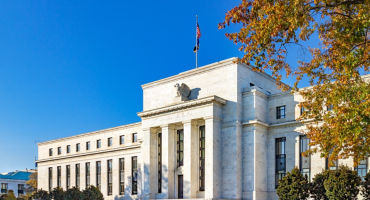- Fixed Income Portfolio Manager
Skip to main content
- Funds
- Insights
- Capabilities
- About Us
- My Account
United States, Institutional
Changechevron_rightThank you for your registration
You will shortly receive an email with your unique link to our preference center.
The views expressed are those of the author at the time of writing. Other teams may hold different views and make different investment decisions. The value of your investment may become worth more or less than at the time of original investment. While any third-party data used is considered reliable, its accuracy is not guaranteed. For professional, institutional, or accredited investors only.
Anyone who invests in or follows the US credit markets has likely heard some version of the phrase "credit spreads are exceedingly tight" repeatedly in the past year.
What does this mean? When credit spreads are tight, it’s important to evaluate the level of compensation received for lending to a business versus the US government (as represented by US Treasuries), and how this pairs with one’s outlook for the economy and company fundamentals. Figure 1 illustrates the option-adjusted spread (OAS) of the Bloomberg US Corporate Bond Index, a proxy for US investment-grade fixed income, as a percentage of the yield-to-worst, or the lowest potential yield that an issuer can pay on a bond without defaulting, of the index. This demonstrates the relative compensation investors receive by choosing to allocate to this sector compared to US Treasuries — the higher the line is on the chart, the more compensation an investor receives for the additional risk.
Right now, the additional compensation for lending to investment-grade companies relative to the US government is at levels not seen since before the global financial crisis, in 2007.
For the past three years, we’ve believed US Treasury volatility would exceed the volatility of credit spreads in the US investment-grade corporate market — a dynamic that’s come to pass. However, a key difference between the environment three years ago and today is that in a period such as 2022, when the US Federal Reserve was raising interest rates in an effort to tame inflation, credit spreads were significantly wider to begin with, as concerns about a recession rose. At the time, the additional spread in corporate bonds compensated investors for volatility in US Treasuries because a rise in the Treasury base rate could be absorbed by credit spreads tightening. In today’s environment, unless we are about to enter a level of OAS as a percentage of yield not seen since before the year 2000, we believe there is little scope for credit-spread tightening broadly.
Against this backdrop, we suspect it may be difficult for fixed income managers who must seek to replicate and outperform a benchmark to navigate the market effectively, given the lack of additional premium for investing in corporate bonds. Flexibility to rotate between Treasuries and credit may be crucial to mitigate credit risk in the current environment. As such, we maintain our conviction that benchmark-agnostic fixed income managers who can adjust their allocations more freely may be better positioned to navigate the current market.
Expert

Weekly Market Update
Continue readingBy
FOMC: Easing into uncertainty
Continue readingOpportunity ahead: Optimism or illusion?
Continue readingFinancing the AI boom: credit markets at a crossroads
Continue readingLow tide, sharp eyes: What to pick up
Continue readingFinding durable value amid shifting currents
Continue readingURL References
Related Insights
Stay up to date with the latest market insights and our point of view.
Thank you for your registration
You will shortly receive an email with your unique link to our preference center

Weekly Market Update
What do you need to know about the markets this week? Tune in to Paul Skinner's weekly market update for the lowdown on where the markets are and what investors should keep their eye on this week.
By

FOMC: Easing into uncertainty
Fixed Income Portfolio Manager Jeremy Forster profiles the Fed's December rate cut, labor market trends, inflation pressures, and the role of anticipated changes to FOMC leaders in 2026.

Opportunity ahead: Optimism or illusion?
Explore our latest views on risks and opportunities across global capital markets.

Financing the AI boom: credit markets at a crossroads
Fixed Income Portfolio Manager Derek Hynes and Fixed Income Investment Specialist Will Prentis examine how the AI financing boom is transforming credit markets and discuss the opportunities and risks it creates for investors.

Low tide, sharp eyes: What to pick up
Fixed Income Managers Campe Goodman and Rob Burn share their outlook for credit in 2026 and discuss how investors can reposition for an environment where opportunities are harder to find.

Finding durable value amid shifting currents
Fixed Income Strategist Amar Reganti and Investment Director Marco Giordano explore how to approach bond investing in 2026. They see durable value for investors who can flexibly adjust to the shifting currents ahead.

Monthly Market Review — October 2025
A monthly update on equity, fixed income, currency, and commodity markets.

Investing in 2026: prepare for inflationary growth
Macro Strategists John Butler and Eoin O'Callaghan share their annual macro outlook and discuss likely implications for markets and investors. They outline four potential scenarios graded by level of probability.

Rapid Fire Questions with Ross Dilkes
In this edition of “Rapid Fire Questions,” fixed income portfolio manager Ross Dilkes shares his views on the Asia credit market—covering the macro outlook, China’s momentum, the most compelling opportunities across the region, and key risks shaping the next 12 months.

Constructive, selective, resilient
Amar Reganti, a member of our Insurance team, explains why he believes insurers should remain selectively risk-on while prioritizing high-quality income and preserving flexibility to add risk as valuations improve.
By

Questioning US credit quality
Fixed income strategist Amar Reganti examines questions surrounding US creditworthiness.
By
URL References
Related Insights
© Copyright 2025 Wellington Management Company LLP. All rights reserved. WELLINGTON MANAGEMENT ® is a registered service mark of Wellington Group Holdings LLP. For institutional or professional investors only.
Enjoying this content?
Get similar insights delivered straight to your inbox. Simply choose what you’re interested in and we’ll bring you our best research and market perspectives.
Thank you for joining our email preference center.
You’ll soon receive an email with a link to access and update your preferences.
Monthly Market Review — October 2025
Continue readingBy